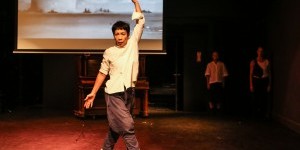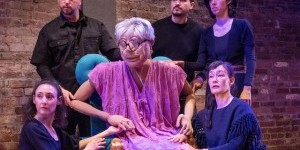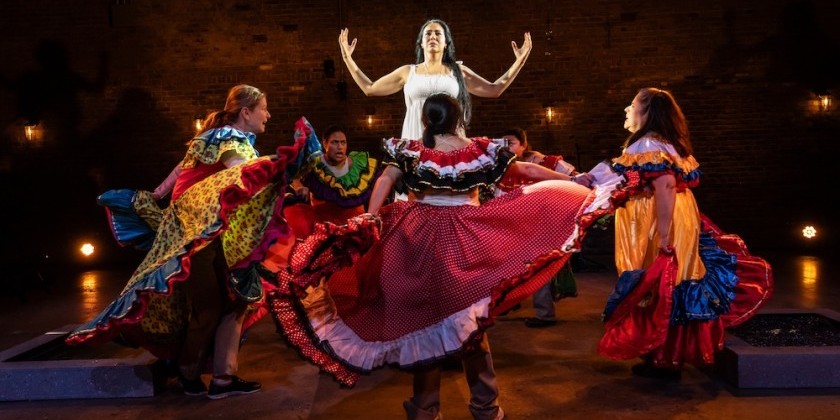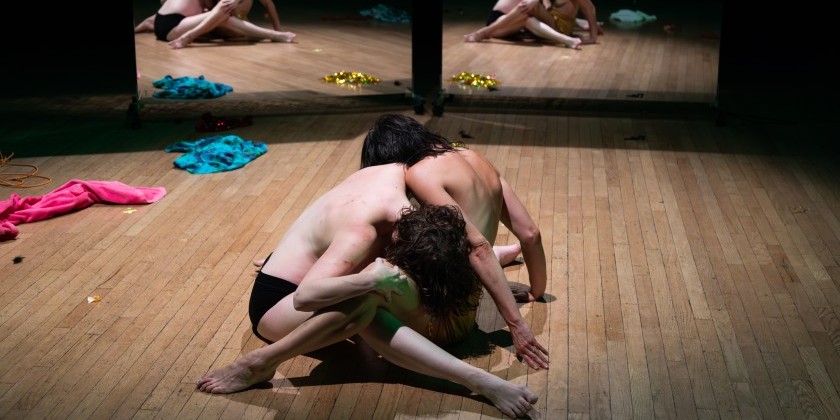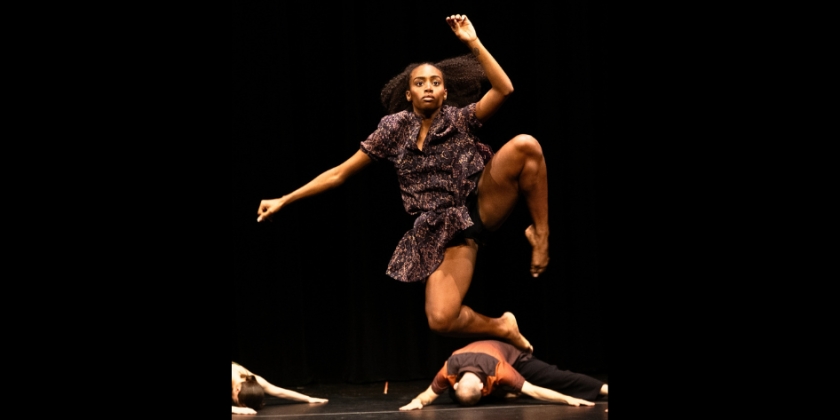IMPRESSIONS: La MaMa Moves! Dance Festival '24: Yoshiko Chuma with Chris Yon and Taryn Griggs Introducing Bea Yon
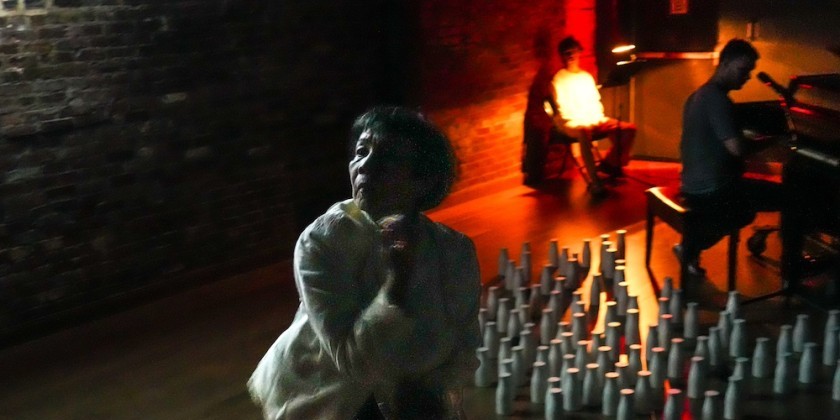
La MaMa Moves! Dance Festival ‘24
Curated by Nicky Paraiso
The Club theatre
Yoshiko Chuma and The School of Hard Knocks’
EXTREME CLASSICS — extreme avant-garde toward extreme classic
Concept and Composition: Yoshiko Chuma
Dancers: Dennis O’Connor and Yoshiko Chuma
Pianist: Dane Terry
Costume: Gabriel Berry
Artworks: Tim Clifford, Kelly Bugden and Van Wifvat
Assistant to Yoshiko Chuma: Santiago Molina
Original composition and Songs: Dane Terry
Dennis O’Connor is performing an adaptation of
Merce Cunningham’s 50 Looks (1979)
Yoggs Family Newsletter, 2014-present (NY edition)
Created and performed by Chris Yon and Taryn Griggs, featuring Bea Yon
Sound collage by Chris Yon
May 23 – 26, 2024
On a shared La MaMa Moves Festival! program with Yoshiko Chuma & the School of Hard Knocks, the Yoggs (the combination of the names Chris Yon and Taryn Griggs) open the evening with 12-year-old Bea Yon crossing the stage. Bea is followed by her dad, Chris Yon, and her mom, Taryn Griggs, former performers with Chuma, in a shifting, side-by-side, straight-faced, make-you-smile series of movements. To jazzy percussive symbol sounds, and an occasional train whoosh, Yon and Griggs’ shake heads (Griggs’ black bob emphasizing every movement) while they step touch, step touch, flick hands, step together, repeat, and accumulate.

Mom calls, “Bea” in a slightly finger-wagging voice, and Bea crosses behind them along the brick wall with her head down. Forward and back continue Yon and Griggs. Bea is again summoned by Griggs, and again she dutifully crosses but this time stays between her parents. Recorded sound plays: “If you’re hearing my voice my name is Bea. We moved from town to town like criminals on the run. Here we are sending our family newsletter;” Yoggs Family Newsletter, 2014-present (NY edition), the title of the dance.
The relatable goings-on in their lives are introduced; their frustrations, such as the forever hold on the phone, (when fed up mom foists the phone on Bea and Bea falls asleep), and their sadnesses. Yon’s mother died, and he drolly comments, “Not that my mom would really like what we’re about to do but I really miss her disappointment.”
The three form a close family unit. Yon and Griggs, it appears, performed and lived together for years before Bea joined. Watchful Bea, an endearing presence and wise beyond her years, has figured them out. She both enters their world and removes herself (“Bird guano, that’s my cue. I’m going to take a little break”) to sit in the audience and read what? Ah, a newsletter.

The parents continue their two-step, gestural duet, in Charlie Chaplin-esque fashion — abrupt changes of direction, purposely a bit disjointed (by fabulous movers) that covers the stage. Bea is the wandering element on the cusp of young adulthood. Her parents, protective but not hovering, offer their daughter a way to safely navigate, just as a seafarer uses the constant and reliable stars.
Yoshiko Chuma’s ongoing artistry of protest began while she was a student revolutionary in Japan. Now, in her eighth decade, she hasn’t let up. She credits Palestine as the inspiration for this latest edition, EXTREME CLASSICS — extreme avant-garde toward extreme classic, although the show’s images are unconnected to Palestine.

The set, an upright piano on which a miniature dinosaur stands, expands as performer, Santiago Molina, arranges 5” high wooden milk bottles and black rubber balls on the floor. A pyramid of bottles crashes to the floor as pianist, Dane Terry, strikes the black keys. A fearsome Godzilla (from the movie) projected on the screen, provides the backdrop for Chuma, in black boots and black sheath, to hold the miniature Godzilla dinosaur aloft and run with it determinedly. Terry, whose back is turned, plays The Forgotten Destiny by M. Persson as the screen shows a bird’s eye view of battleships blanketing the sea. Occasional armament flashes are seen.
An everyman, Dennis O’Connor, in pressed white dress shirt and jeans with bright blue eyes, rises and dances Merce Cunningham’s 50 Looks. He, a Godzilla, steps between the scattered miniature milk bottles, stand-ins for the battleships, and kneels with arms held in an inverted U, as if shielding the earth. The piercing sounds of bombs explode, and the mushroom cloud fully fills the screen. We are viewing the destruction of the Bikini Island by the U.S.’s detonation of 24 nuclear bombs from 1946-58, 1000 times more powerful than the nuclear bombs dropped on Hiroshima and Nagasaki, an oft-visited subject of Chuma’s.
Chuma mirrors O’Connor’s positions then holds a reflecting orb before the audience where we view our distorted images, as if saying, “We’re all to blame!” The announcer on the screen intones, “The next (image) is a direct aerial view taken over the blast.”

Scenes unspool and build. Chuma acts as a conductor and fashions images and ideas as they arise in the moment. A countdown to detonation is heard from the screen announcer, as well as the incongruent sounds of birds and animals. Chuma kicks the bottles with whacking force. Amidst the destruction, O’Connor melts to the floor. Chuma climbs on Terry’s shoulders and pounds on the piano keys with fists and boots, a visceral expression of her lifelong protest.




